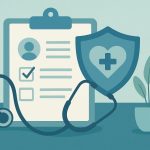Porn addiction can feel overwhelming and isolating. Many people tend to struggle in silence. That is where mental health services play a vital role. They offer hope, understanding, and practical solutions. One size does not accommodate all in healing.
Each person’s story, habits, and triggers are different. That is why treatment plans need to be tailored carefully. Mental health professionals use proven tools, such as identifying triggers or porn addiction stats, to personalize support. This makes recovery more effective and less stressful. Let’s look at what goes into creating these unique plans.
Understanding the Person’s History
Mental health services start by learning about a person’s background. They ask when porn use started in their life. Family dynamics often come up during these talks. Some people used porn to escape stress early on. Professionals ask about other addictions or habits, too. Relationship history can reveal hidden triggers. They check for mental health concerns like anxiety or depression. Understanding the whole story helps guide the plan. Every detail shared helps shape better care. A clear picture leads to practical, personal steps forward.
Identifying Triggers and Patterns
Triggers play a massive role in porn addiction. Therapists help clients spot what sparks cravings. Stress, loneliness, or boredom are common triggers for many. Some people struggle during late nights alone. Others relapse after a fight with a partner. Keeping a journal helps track these moments. Patterns often reveal themselves over time. Once triggers are known, they can be managed. Small lifestyle changes can reduce temptation daily. Knowing what causes urges is a decisive first step.
Using Porn Addiction Stats to Tailor Treatment
Reliable porn addiction stats also help shape more effective treatment plans. Research shows millions worldwide face this struggle. Many start watching porn during their teen years. Studies show how often relapses happen in recovery. Data reveals common emotional triggers and habits. Some groups have higher addiction rates than others. This info guides therapists in choosing helpful methods or understanding trends. They can predict challenges a client might face. Stats help create realistic goals for progress. Evidence-based plans provide individuals with the best opportunity to recover.
Including Family and Relationship Support
Porn addiction often affects relationships deeply. Many plans include partners or family in the healing process. Therapy sessions can be conducted together if the individuals agree. This helps rebuild trust that may feel broken. Honest talks strengthen understanding on both sides. Family support makes people feel less alone daily. Professionals teach loved ones how to help gently. Clear boundaries and healthy discussions are encouraged. This support helps many people recover more quickly. A caring home environment makes change more likely to stick.
Providing Tools and Coping Strategies
Therapists share practical tools to manage daily urges. Some people learn mindfulness or breathing exercises. Journaling helps process challenging emotions safely. Blocking apps reduces temptation at risky moments. Support groups give people someone to call anytime. Professionals may suggest new hobbies as a means of stress relief. Self-care routines build strength against relapses. Each tool is carefully tested to ensure it meets the person’s specific needs. Plans are flexible as life changes over time. Small tools lead to significant steps forward.
Every person’s path through porn addiction is unique. Mental health services understand this well. They listen to each story and learn the real triggers. Stats and research help shape practical, caring plans. With tailored care, recovery feels more possible. Healing can happen, one step at a time. No one has to walk this road alone.
Lynn Martelli is an editor at Readability. She received her MFA in Creative Writing from Antioch University and has worked as an editor for over 10 years. Lynn has edited a wide variety of books, including fiction, non-fiction, memoirs, and more. In her free time, Lynn enjoys reading, writing, and spending time with her family and friends.















